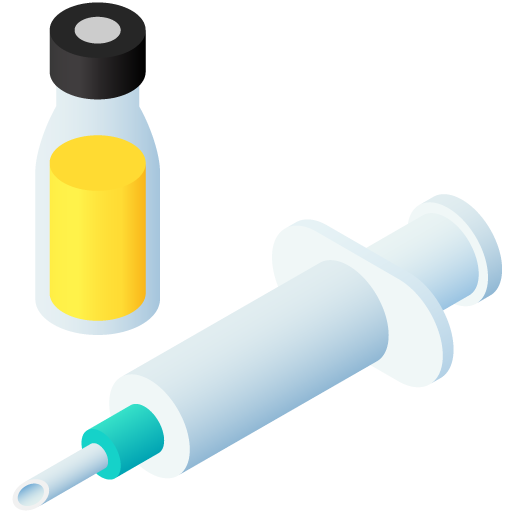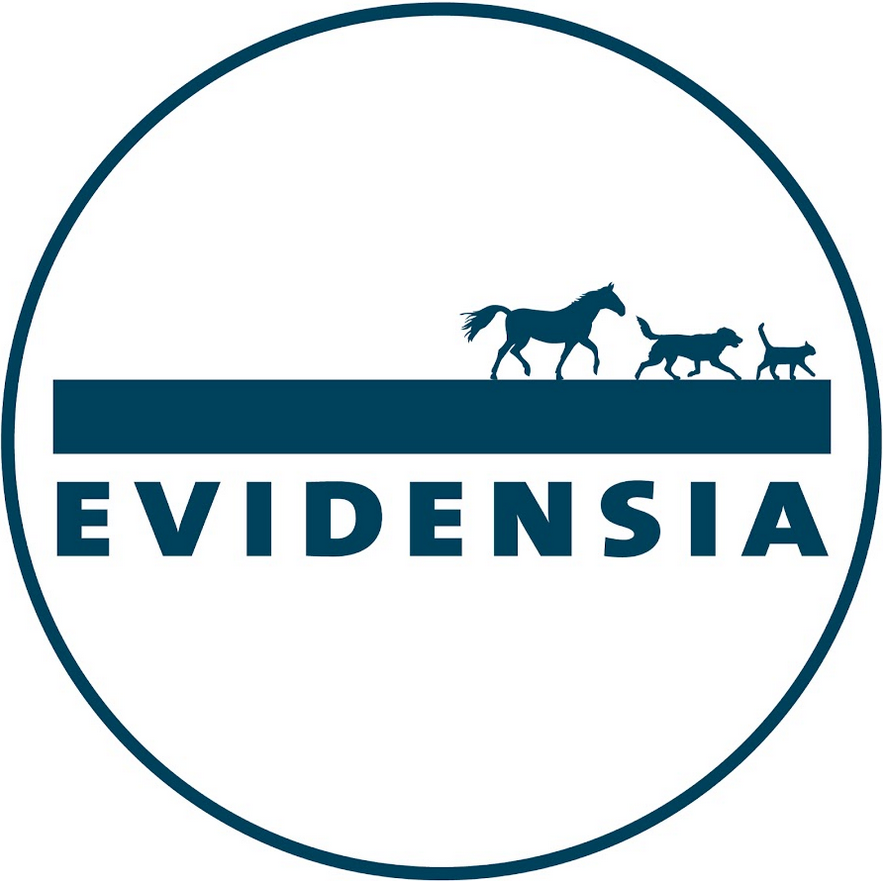Combination therapy
No results were found for your selected species
Tildren
Active substance
ATC code
Species
Horses over 3 years of age.
Indications
As an aid in the treatment of clinical signs of lameness associated with bone spavin in combination with a controlled exercise regime.
Dose to be administered and administration route
Intravenous infusion after reconstitution and dilution.
1 mg of tiludronic acid per kg of body weight, corresponding to 5 ml of reconstituted solution per 100 kg.
To ensure a correct dosage, body weight should be determined as accurately as possible.
Preparation of the ready-to-use solution for infusion:
- Using a sterile needle and a suitable sterile disposable syringe, remove 25 ml of 0.9% Sodium Chloride solution or 5% Glucose solution from a 1 l to 3 l infusion container.
- Add the 25 ml of isotonic Sodium Chloride or Glucose solution to the vial of powder.
- Shake until the powder is completely dissolved. The concentrate appears as a clear, particle free and colourless solution.
- Adhering to strict aseptic technique, inject the reconstituted solution immediately into the infusion container
- Gently invert the container several times.
- Administer through a suitable needle or catheter inserted into the jugular vein and connected to the infusion container with sterile disposable infusion tubing.
- Each vial is for single use only. Cloudy solutions or solutions containing visible solid particles should not be administered.
The product should be infused over 30 minutes at an even rate. Fluctuations in the infusion rate could increase the risk of the horse showing signs of colic during or after the infusion.
Do not exceed the infusion rate as this could increase the risk of the horse showing signs of colic during or after infusion.
Do not exceed the recommended dosage.
Adverse reactions
Horse:
|
Common (1 to 10 animals / 100 animals treated): |
Colic1 Discomfort2 (belly watching, yawning, pawing or kicking, stretching, light bruxism) Restlessness2 Increased sweating Soft stool |
|
Rare (1 to 10 animals / 10,000 animals treated): |
Acute renal failure3 |
|
Very rare (<1 animal / 10,000 animals treated, including isolated reports): |
Hypersensitivity reaction4 Anaphylaxis4 |
|
Undetermined frequency (cannot be estimated from the available data): |
Recumbency5 |
1 Signs of colic appear within a few hours following treatment, are mild and generally resolve without any specific treatment. In case signs persist, conventional treatments should be administered. The administration of an alpha 2 adrenergic agonist prior infusion may reduce the occurrence of signs of colic.
2 An increase in frequency of signs of discomfort and restlessness is observed when the infusion duration is less than 15 minutes.
3 may occur within 1 week after administration. Renal parameters should be monitored before administration and water consumption and urine output should be monitored where possible after administration. Renal insufficiency is more frequently observed in animals concurrently exposed to NSAIDs. In these cases, appropriate fluid therapy should be instituted, and renal parameters monitored.
4 signs of reaction ranged from urticaria to anaphylactic shock, which can be fatal. A ppropriate treatment should be sought immediately.
5 may occur after the infusion. Care should be taken to ensure that the horse can lie down in a comfortable, unrestricted area.
Reporting adverse events is important. It allows continuous safety monitoring of a veterinary medicinal product. Reports should be sent, preferably via a veterinarian, to either the marketing authorisation holder or its local representative or the national competent authority via the national reporting system. See the package leaflet for respective contact details.
Dispensing
POM-V - Prescription Only Medicine – VeterinarianSUMMARY OF PRODUCT CHARACTERISTICS
1. NAME OF THE VETERINARY MEDICINAL PRODUCT
Tildren 500 mg lyophilisate for solution for infusion for horses.
2. QUALITATIVE AND QUANTITATIVE COMPOSITION
Each vial contains:
Active substance:
Tiludronic acid (as disodium salt) 500 mg
After reconstitution: 1 ml solution contains 20 mg tiludronic acid.
For the full list of excipients, see section 6.1
3. PHARMACEUTICAL FORM
Lyophilisate for solution for infusion.
Compact freeze-dried white powder.
4. CLINICAL PARTICULARS
4.1 Target species
Horses over 3 years of age.
4.2 Indications for use, specifying the target species
As an aid in the treatment of clinical signs of lameness associated with bone spavin in combination with a controlled exercise regime.
4.3 Contraindications
In the absence of any data relating to the adverse effects of tiludronic acid on the skeleton of young animals, do not administer to a horse less than 3 years old. Do not administer to a horse with known impaired renal function. Renal function should be evaluated prior to treatment.
Do not use in case of known hypersensitivity to biphosphonates or to any of the excipients.
See sections 4.7 and 4.11.
4.4 Special warnings for each target species
None.
4.5 Special precautions for use
Special precautions for use in animals
The clinical effect of the product depends on the presence of osteolytic processes causing pain and leading to lameness. The product should be used only after a proper diagnosis combining a complete orthopaedic clinical examination including local analgesia and appropriate imaging techniques in order to identify the cause of pain and the nature of bone lesions.
It is recommended to respect the recommended 30 minute duration of infusion as the duration of infusion has an effect on the occurrence or severity of the adverse reactions.
It is advisable for an experienced horse person to observe the horse for the first four hours following the infusion due to the possible onset of side effects.
The product should be administered with caution in a hypocalcemic horse. In this case, it is advised to slow down the rate of the infusion. As the risk of side effects might be increased under these circumstances, these animals should be the subject of particularly close surveillance.
Because of its mild hypocalcemic effect, the product should be administered with caution in horse with disorders of heart function. In this case, it is advisable to slow down the rate of infusion.
Special precautions to be taken by the person administering the veterinary medicinal product to animals
Avoid contact with skin and eyes.
Avoid accidental self-injection: it is recommended to insert the intravenous infusion needle into the vein before the reservoir containing the product is connected. In the case of self injection, seek medical advice immediately and show the package leaflet or the label to the physician.
Wear impervious gloves when preparing the solution for injection Wash hands after use.
4.6 Adverse reactions (frequency and seriousness)
The main adverse reactions related to treatment with tiludronic acid are signs of discomfort or signs of colic (expressed as belly watching, yawning, pawing or kicking, stretching, light bruxism, often combined with restlessness), softening of faeces and sweating. These side effects were observed in less than 15 % of horses treated with the recommended therapeutic scheme.
The signs of colic appear within a few hours following treatment, are mild and transient and generally resolve spontaneously without requiring any specific treatment. In case signs persist, conventional treatments should be administered. The administration of an alpha 2 adrenergic agonist prior infusion may reduce the occurrence of signs of colic. As recumbency can be experienced post infusion, be aware that the horse should be free to lie down in a comfortable unrestricted area. An increase in frequency of signs of discomfort and restlessness is observed when the infusion duration is less than 15 minutes.
On very rare occasions (less than 1 out of 20,000 horses) allergic or anaphylactic like reactions have been reported in treated horses: signs of reaction ranged from urticaria to anaphylactic shock which can be fatal.
In rare cases, acute renal failure may occur within 1 week after administration of the product. Renal parameters should be monitored before administration of the product and water consumption and urine output should be monitored where possible after administration.
Renal insufficiency is more frequently observed in animals concurrently exposed to NSAIDs. In these cases, appropriate fluid therapy should be instituted, and renal parameters monitored.
The frequency of adverse reactions is defined using the following convention:
- very common (more than 1 in 10 animals treated displaying adverse reaction(s))
- common (more than 1 but less than 10 animals in 100 animals treated)
- uncommon (more than 1 but less than 10 animals in 1,000 animals treated)
- rare (more than 1 but less than 10 animals in 10,000 animals treated)
-very rare (less than 1 animal in 10,000 animals treated, including isolated reports).
4.7 Use during pregnancy, lactation or lay
Studies conducted on laboratory animals (mice, rats, rabbits) did not reveal any embryotoxic, foetotoxic or teratogenic effects nor effects on peri- or post-natal development. Particularly, no adverse effects have been observed on the skeleton. The safety of the product has not been studied in pregnant or lactating mares. The use of the product during pregnancy or lactation in mares is not recommended.
4.8 Interaction with other medicinal products and other forms of interaction
Do not mix or concomitantly administer intravenously the reconstituted solution with solutions containing divalent metal ions (Ca2+ or Mg2+) such as Lactated Ringers. A solution of tiludronic acid may form complexes with these ions.
Avoid concomitant intravenous administration with drugs that can reduce serum calcium (such as tetracyclines) or whose toxicity can be exacerbated by a reduction in serum calcium (such as aminoglycosides).
Concurrent administration of potentially nephrotoxic substances, such as NSAIDs, should be approached with caution and renal function should be monitored. Regarding other medicinal products, no data are available.
4.9 Amounts to be administered and administration route
Intravenous infusion after reconstitution and dilution.
1 mg of tiludronic acid per kg of body weight, corresponding to 5 ml of reconstituted solution per 100 kg.
Preparation of the ready-to-use solution for infusion:
- Using a sterile needle and a suitable sterile disposable syringe, remove 25 ml of 0.9% Sodium Chloride solution or 5% Glucose solution from a 1 l to 3 l infusion container.
- Add the 25 ml of isotonic Sodium Chloride or Glucose solution to the vial of powder.
- Shake until the powder is completely dissolved. The concentrate appears as a clear, particle free and colourless solution.
- Adhering to strict aseptic technique, inject the reconstituted solution immediately into the infusion container
- Gently invert the container several times.
- Administer through a suitable needle or catheter inserted into the jugular vein and connected to the infusion container with sterile disposable infusion tubing.
- Each vial is for single use only. Cloudy solutions or solutions containing visible solid particles should not be administered.
The product should be infused over 30 minutes at an even rate. Fluctuations in the infusion rate could increase the risk of the horse showing signs of colic during or after the infusion.
Do not exceed the infusion rate as this could increase the risk of the horse showing signs of colic during or after infusion.
Do not exceed the recommended dosage.
4.10 Overdose (symptoms, emergency procedures, antidotes), if necessary
At 2, 3 or 5 times the recommended dosage, an increase in frequency of the side effects, in particular restlessness, signs of discomfort or signs of colic, is observed. These signs may appear during or after the infusion, are usually mild and transient and generally resolve spontaneously at the end of the infusion without requiring any specific treatment. In cases where signs persist, conventional treatments should be administered.
4.11 Withdrawal period(s)
Meat and offal: zero days
Not permitted for use in lactating animals producing milk for human consumption.
5. PHARMACOLOGICAL PROPERTIES
Pharmacotherapeutic group: Bisphosphonates. ATCvet code: QM05BA05.
5.1 Pharmacodynamic properties
The pharmacodynamic effects of tiludronic acid have been investigated in-vitro, in laboratory animals and in the horse.
Tiludronic acid exerts its inhibitory effect on bone resorption by blocking some of the osteoclast metabolic pathways (production of non-hydrolysable, cytotoxic, ATPanalogue metabolites, inhibition of the organisation of the cytoskeleton required for the activation of the osteoclast and inhibition of the osteoclastic proton pumps). Tiludronic acid helps in regulating bone remodelling in every situation where excessive bone resorption (i.e. increased osteoclastic activity) is occurring. Osteolysis is a painful process. In the horse, bone spavin is a condition where osteolytic lesions develop in tarsal bones, which contributes to the clinical symptoms. In laboratory animals the regulatory effect on bone remodelling is not accompanied by negative effects on the formation and mineralisation of bone at doses sufficient to significantly inhibit bone resorption.
Pharmacodynamic data in horse free of lameness have shown that, after intravenous administration at the dose 1 mg/kg, tiludronic acid produces immediate inhibitory effects on bone resorption, as shown by the sharp decrease of a serum marker of bone resorption (CTX-1) 12 to 24 hours after dosing. Tiludronic acid was also shown to prevent the loss of bone density after a period of immobilisation by casting.
At therapeutic doses, bone formation was not impaired as shown by the absence of significant changes in the blood concentrations of a marker of bone formation (Bone alkaline phosphatase).
Tiludronic acid has also been shown to have anti-arthritic properties in a polyarthritis model in the rat. In vitro studies have revealed that the product has inhibitory effects on the secretion of enzymes degrading the cartilaginous matrix produced by the chondrocytes and the synovial cells.
5.2 Pharmacokinetic particulars
The pharmacokinetic profile of tiludronic acid in plasma after intravenous administration by infusion over 30 minutes in the horse at a dose of 1 mg/kg/day is characterised by a rapid decrease in plasma concentrations. Cmax is about 8 ± 2 mg/l, plasma t1/2 is short, about 37 ± 20 hours, and total clearance is about 0.03 ± 0.01 l/h/kg. There is no plasma accumulation of tiludronic acid when infusions are repeated 3 times at 14-day intervals. The pharmacokinetic profile of tiludronic acid is dose- proportional and time-independent. Binding to plasma proteins is of about 80% - 85%.
Tiludronic acid is rapidly cleared from blood and stored in the bone where it preferentially binds to the active remodelling sites, by binding to hydroxyapatite crystals. The bound quantity corresponds to 30 to 50% of the total administered dose. The distribution of tiludronic acid in the bone is not uniform. Binding is greater in cancellous bone than in cortical bone.
The distribution of the drug in all other body tissues is limited. It is not metabolised. Tiludronic acid is eliminated mainly via the urine, in unchanged form.
6. PHARMACEUTICAL PARTICULARS
6.1 List of excipients
Mannitol (E421).
6.2 Major incompatibilities
Do not mix or concomitantly administer intravenously the reconstituted solution with solutions containing divalent metal ions (Ca2+ or Mg2+) such as Lactated Ringers. A solution of tiludronic acid may form complexes with these ions. In the absence of compatibility studies, this veterinary medicinal product must not be mixed with other veterinary medicinal product.
6.3 Shelf life
Shelf-life of the veterinary medicinal product as packaged for sale: 3 years.
After reconstitution and dilution according to directions, the product may be stored at 2 to 8°C for no longer than 24 hours.
6.4 Special precautions for storage
Keep the vial in the outer carton in order to protect from light.
6.5 Nature and composition of immediate packaging
Nature of immediate packaging:
A clear glass (type II) vial with chlorobutyl rubber closure secured by aluminium overseal with plastic flip-off cap within cardboard carton.
Pack size: 1 vial
6.6 Special precautions for the disposal of unused veterinary medicinal product or waste materials derived from the use of such products
Any unused veterinary medicinal product or waste materials derived from such veterinary medicinal product should be disposed of in accordance with local requirements.
7. MARKETING AUTHORISATION HOLDER
AUDEVARD
37-39 rue de Neuilly
92110 Clichy
France
8. MARKETING AUTHORISATION NUMBER
Vm 44684/4001
9. DATE OF FIRST AUTHORISATION
30 December 2015
10. DATE OF REVISION OF THE TEXT
March 2022
Approved 21 March 2022

 TRUSTED SOURCE
TRUSTED SOURCE









